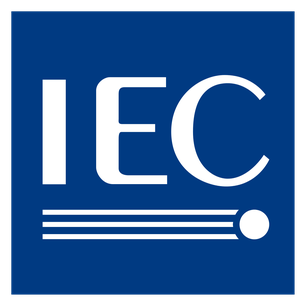1 | 1 | Mercury in single capped fluorescent lamps (compact) with or without an integrated ballast not exceeding (per burner): |
1-b and 1-c | 1-a | For general lighting purposes ≥ 30 W and <150 W: 5 mg |
- | 1-b | For general lighting purposes > 30 W : 2.5mg |
- | 1-c | For general lighting purposes <30W with long life (>15,000 hours): 3.5 mg |
1-e | 1-d | For general lighting purposes with circular or square structural shape and tube diameter ≤ 17 mm:7mg |
2-a | 2 | Mercury in double-capped linear fluorescent lamps without an integrated ballast for general lighting purposes not exceeding (per lamp): |
2-a-II | 2-a | Tri-band phosphor with normal lifetime and a tube diameter< 9 mm (e.g. T2): 5 mg |
2-a-III | 2-b | Tri-band phosphor with normal lifetime and a tube diameter ≥ 9 mm and ≤ 17 mm (e.g. T5): 5 mg |
2-b-III | 2-c | Tri-band phosphor with normal lifetime and a tube diameter > 17 mm and ≤ 28 mm (e.g. T8): 8 mg |
- | 2-d | Tri-band phosphor with normal lifetime and a tube diameter > 28 mm (e.g. T12): 5 mg |
- | 2-e | Tri-band phosphor with a long lifetime (≥ 15 000 h) and T8 halophophate: 8 mg |
3 | 3 | Mercury in other fluorescent lamps without an integrated ballast not exceeding (per lamp): |
- | 3-a | Non-linear halophosphate lamps )all diameters): 15 mg |
- | 3-b | Non-linear tri-band phosphor lamps with tube diameter > 17 mm (e.g. T9) :15mg |
- | 3-c | Lamps for other general lighting and special purposes (e.g. induction lamps):15mg |
- | 3-d | T12 linear halophosphate lamps: 10 mg |
- | 4 | Mercury in other low-pressure discharge lamps (per lamp): 15mg |
4-b | 5 | Mercury in High-Pressure Sodium (vapor) lamps for general lighting purposes not exceeding (per burner) in lamps with improved color rendering index Ra > 60: |
4-b-I | 5-a | P ≤ 155 W:30mg |
- | 5-b | 150 W < P ≤ 405 W : 40 mg |
4-b-III | 5-c | P > 405 W: 40 mg |
4-c | 6 | Mercury in other High-Pressure Sodium (vapor) lamps for general lighting purposes not exceeding (per burner): |
4-c-I | 6-a | P ≤ 155 W: 25mg |
4-c-II | 6-b | 150 W < P ≤ 405 W : 30mg |
4-c-III | 6-c | P > 405 W: 40 mg |
4-d | 7-a | Mercury in High-Pressure Mercury (vapor) lamps (HPMV) |
4-e | 7-b | Mercury in metal halide lamps (MH) |
4-f | 7-c | Mercury in other discharge lamps for special purposes not specifically mentioned |
5-a | 8-a | Lead in glass of cathode-ray tubes |
5-b | 8-b | Lead in glass of fluorescent tubes not exceeding 0.2 % by weight |
6-a | 9-a | Lead as an alloying element in steel for machining purposes and in galvanized steel containing up to 0.35 % lead by weight |
6-b | 9-b | Lead as an alloying element in aluminum containing up to 0.4 % lead by weight |
6-c | 9-c | Copper alloy containing up to 4 % lead by weight |
7-a | 10-a | Lead in high melting temperature type solders (i.e. lead-based alloys containing 85 % by weight or more lead) |
7-b | 10-b | Lead in solders for servers, storage and storage array systems, network infrastructure equipment for switching, signaling, transmission, and network management for telecommunications |
7-c-I | 10-c | Electrical and electronic components containing lead in a glass or ceramic other than dielectric ceramic in capacitors, e.g. piezoelectronic devices, or in a glass or ceramic matrix compound |
7-c-II | 10-d | Lead in dielectric ceramic in capacitors for a rated voltage of 125 V AC or 250 V DC or higher |
8-b | 11 | Cadmium and its compounds in electrical contacts |
9 | 12 | Hexavalent chromium as an anticorrosion agent of the carbon steel cooling system in absorption refrigerators up to 0.75 % by weight in the cooling solution |
9-b | 13 | Lead in bearing shells and bushes for refrigerant-containing compressors for heating, ventilation, air conditioning, and refrigeration (HVACR) applications |
13-a | 14-a | Lead in white glasses used for optical applications |
13-b | 14-b | Cadmium and lead in filter glasses and glasses used for reflectance standards |
15 | 15 | Lead in solders to complete a viable electrical connection between semiconductor die and carrier within integrated circuit flip chip packages |
17 | 16 | Lead halide as radiant agent in high intensity discharge (HID) lamps used for professional reprography applications |
18-b | 17 | Lead as activator in the fluorescent powder (1% lead by weight or less) of discharge lamps when used as specialty lamps for diazoprinting reprography, lithography, insect traps, photochemical and curing processes containing phosphors such as BSP (BaSi205:Pb) |
21 | 18 | Lead and cadmium in printing inks for the application of enamels on glasses, such as borosilicate and soda-lime glasses |
24 | 19 | Lead in solders for the soldering to machined through hole discoidal and planar array ceramic multilayer capacitors |
25 | 20 | Lead oxide in surface conduction electron emitter displays (SED) used in structural elements, notably in the seal frit and frit ring |
30 | 21 | Cadmium alloys as electrical/mechanical solder joints to electrical conductors located directly on the voice coil in transducers used in high-powered loudspeakers with sound pressure levels of 100 dB (A) and more |
31 | 22 | Lead in soldering materials in mercury-free flat fluorescent lamps (which e.g. are used for liquid crystal displays, design or industrial lighting) |
32 | 23 | Lead oxide in seal frit used for making window assemblies for Argon and Krypton laser tubes |
33 | 24 | Lead in solders for the soldering of thin copper wires of 100 μm diameter and less in power transformers |
34 | 25 | Lead in cermet-based trimmer potentiometer elements |
37 | 26 | Lead in the plating layer of high voltage diodes on the basis of a zinc borate glass body |
38 | 27 | Cadmium and cadmium oxide in thick film pastes used on aluminium bonded beryllium oxide |
29 | 28 | Lead linked to crystal glass
|






